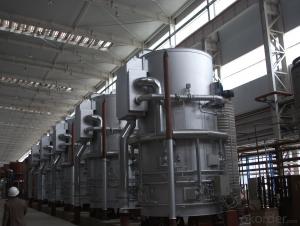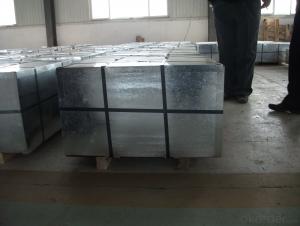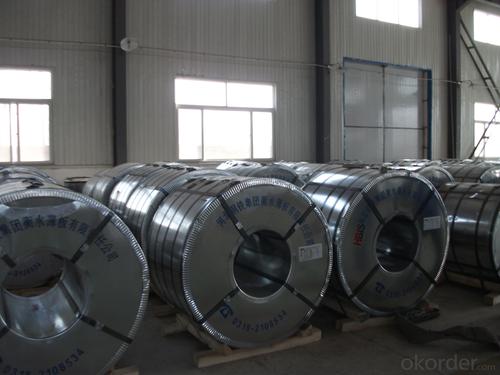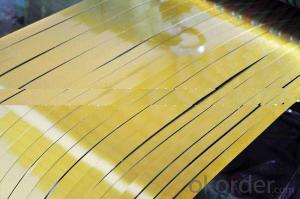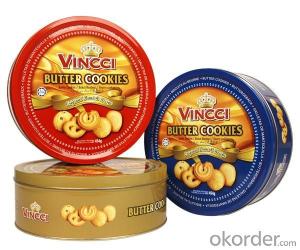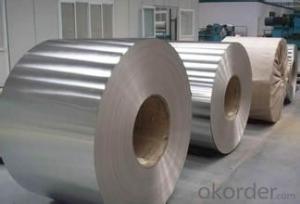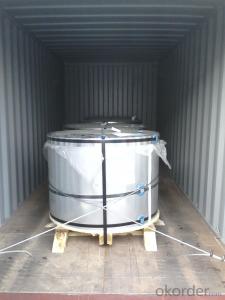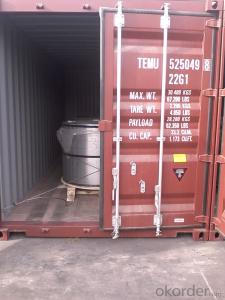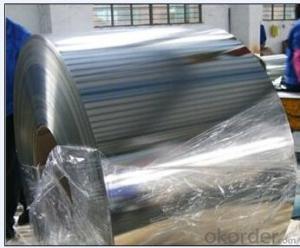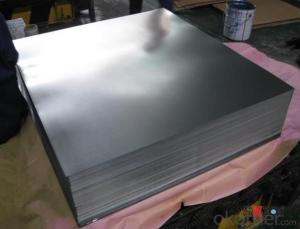Tinplate ETP for Milk Powder Cans
- Loading Port:
- Qingdao
- Payment Terms:
- TT or LC
- Min Order Qty:
- 25 m.t.
- Supply Capability:
- 30000 m.t./month
OKorder Service Pledge
OKorder Financial Service
You Might Also Like
1.Structure of Tinplate ETP for Milk Powder Cans Description
Electrolytic Tinplate is a thin steel sheet coated by tin. It has an extremely beautiful metallic luster as well as excellent properties in corrosion resistance, solder ability, and weld ability.
2.Main Features of the Tinplate ETP for Milk Powder Cans
Electrolytic Tinplate undoubtedly enjoys the pride of place as a packaging medium especially for food. It owes its unique position to its "nine layer sandwich structure", each of which contributes to its eminence as a packing material. The steel base of electrolytic tinplate provides the necessary strength and formability for can fabrication. The tin-iron alloy layer provides the bond between the steel and free tin layer. The free tin layer is not only responsible for the attractive bright finish and ease of solderability but is also non-toxic- a factor of vital importance in food packaging!
Tinplate is also widely used for making all types of containers such as food cans, beverage cans, and artistic cans, tea cans, painting cans, chemical package cans and dry food package cans, metal printing etc. Its applications are not limited to containers; recently, electrolytic tinplate has also been used for making electrical machinery parts and many other products.
3.Tinplate ETP for Milk Powder Cans Images
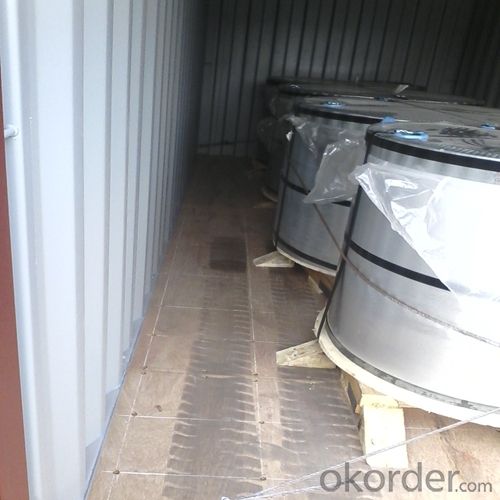
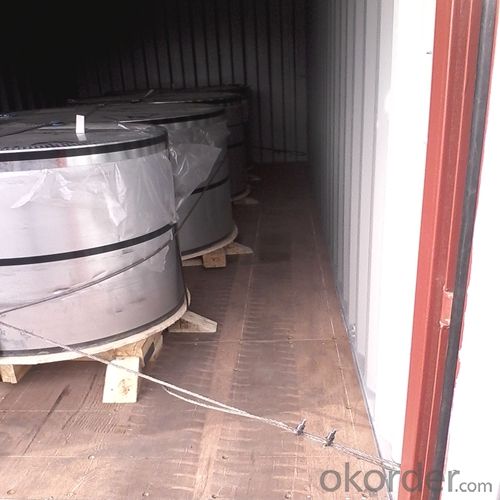
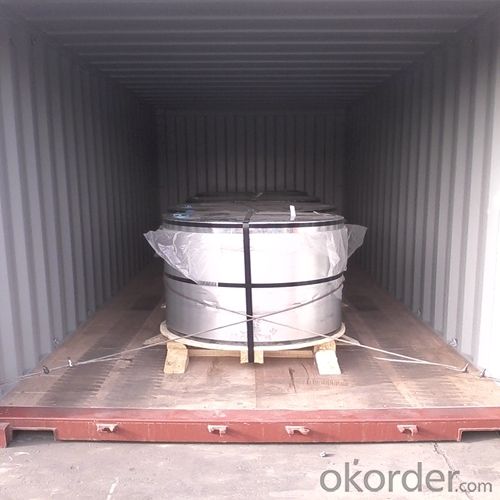
4.Tinplate ETP for Milk Powder Cans Specification
Standard: ISO 11949 -1995
Material: SPCC
Thickness:0.175mm
Width: 600mm
Temper: T4
Annealing:CA
Coil Inner Diameter: 508mm
Weight: 6-10 tons/coil 1~1.7 tons/sheets bundle
Passivation:311
Oil: DOS
Surface: Finish
5.FAQ of Tinplate ETP for Milk Powder Cans
1. What is the delivery time for your prime quality tinplate?
Usually 35 days after order confirmation.
2. What is your Minimum Order Quantity?
Usually MOQ is 50tons for one single size, for trial order, it can be 25 tons.
3. What is the payment term?
The most common we use is L/C at sight or TT. We can also try use other terms.
- Q: How does tinplate withstand corrosion?
- Tinplate withstands corrosion due to the presence of a thin layer of tin coating on its surface. This tin layer acts as a barrier, preventing direct contact between the tinplate and the surrounding environment, thus protecting it from rust and corrosion.
- Q: What are the main growth opportunities for the tinplate industry?
- The main growth opportunities for the tinplate industry include the increasing demand for sustainable and eco-friendly packaging solutions, the rapid growth of the food and beverage industry, and the rising popularity of canned products in emerging markets. Additionally, technological advancements in tinplate production and the development of innovative coatings and printing techniques offer opportunities for differentiation and market expansion.
- Q: What kind of metal material is tinplate? How much is the current price per ton?
- In seventeenth Century, Britain, France, and Sweden all wanted to build their own tinplate industry, but they needed a lot of money. Therefore, the delay has not been developed. It was not until 1811 when Brian Donkin and John Hall opened tin canned food that tinplate was developed on a large scale. Now the whole world annual production capacity of 250 thousand tons more than 1/3 cieux, used in the manufacture of tinplate, which are mostly used in canned food industry.
- Q: Can tinplate be shielded?
- For tinplate shielding, it is a kind of shielding material, at present 3 applications more cheap, processing is good, but the finished long-term placement of rust on the fracture surface, thus affecting the weldability, which is its only drawback. If it is placed in a short time, it will not affect weldability. Electroplating is not the best way to solve the problem. My supplier is coated with an anti rust paint on the fracture surface, and then ultrasonic cleaning is done before going on line. But I mostly use "ocean shield frame copper to make," a little expensive, but the performance is very good ^_^
- Q: What are the main challenges in tinplate inventory management?
- The main challenges in tinplate inventory management include managing fluctuating demand, ensuring accurate forecasting, optimizing storage space, minimizing waste and obsolescence, and maintaining efficient logistics and supply chain operations.
- Q: How does tinplate packaging contribute to food safety?
- Tinplate packaging contributes to food safety by providing a protective barrier that prevents contamination from external factors such as light, air, and moisture. This helps to preserve the quality, freshness, and nutritional value of the packaged food. Additionally, tinplate packaging is highly resistant to corrosion, ensuring that harmful substances do not leach into the food. Its durability also prevents physical damage during transportation and storage, reducing the risk of contamination.
- Q: What's the head iron?
- SPTE, which is commonly known as tin, tin plate, thickness of 0.15-0.3mm, width, generally between 300-900mm.
- Q: How does the thickness of tinplate affect its strength and durability?
- The thickness of tinplate directly affects its strength and durability. Thicker tinplate tends to be stronger and more durable, as it can withstand greater external forces and resist deformation. Thicker tinplate also offers better protection against corrosion and can handle harsher environmental conditions. On the other hand, thinner tinplate may be more prone to bending or denting, and it may have reduced durability and resistance to damage.
- Q: How is tinplate used in the manufacturing of household appliances?
- Tinplate is commonly used in the manufacturing of household appliances as it provides a protective and decorative coating. It is used to create the outer shell or casing of appliances such as refrigerators, washing machines, and ovens. The tin coating helps to prevent corrosion and rusting, ensuring the longevity of the appliance. Additionally, the shiny and smooth surface of tinplate enhances the aesthetic appeal of the appliances, making them more visually appealing to consumers.
- Q: What are the different surface finishes available for tinplate?
- The different surface finishes available for tinplate include bright, stone, matte, and silver.
Send your message to us
Tinplate ETP for Milk Powder Cans
- Loading Port:
- Qingdao
- Payment Terms:
- TT or LC
- Min Order Qty:
- 25 m.t.
- Supply Capability:
- 30000 m.t./month
OKorder Service Pledge
OKorder Financial Service
Similar products
Hot products
Hot Searches
Related keywords

